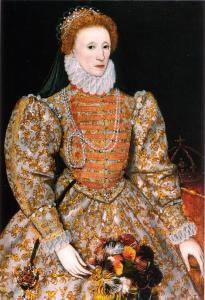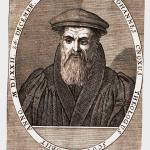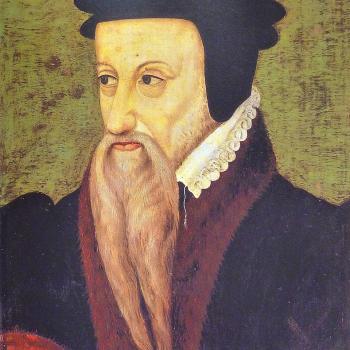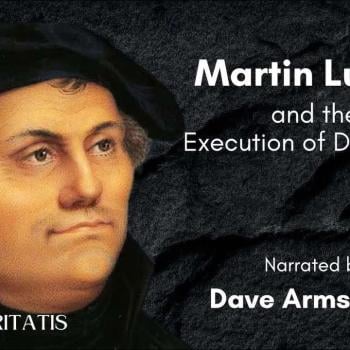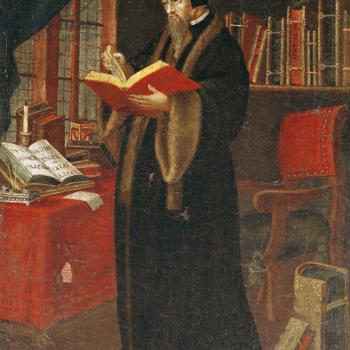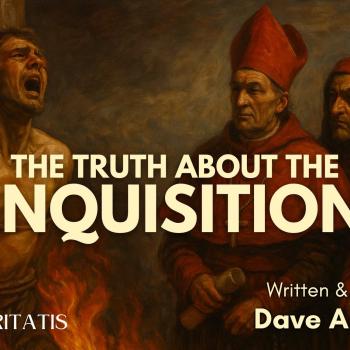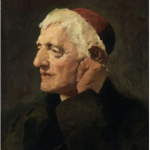[originally posted on my blog on 10 March 2008]
Catholics lost not only freedom of worship, but civil rights as well; their estates, property, and sometimes even lives were at the mercy of any informer. The fact that these laws were passed as political occasion demanded deprived them of any coherence or consistency; nor was any codification ever attempted, so that the task of summing up this long and complicated course of legislation is a difficult one.
Relief Act of 1791, and the first to be appointed King’s Counsel after the Catholic Emancipation Act, thought it best to group these The eminent lawyer, Charles Butler, the first Catholic to be called to the Bar after the Catholic Emancipation Act, thought it best to group these laws under five heads:
those which subjected Catholics to penalties and punishments for practising their religious worship;
those which punished them for not conforming to the Established Church (Statutes of Recusancy).
those regulating the penalties or disabilities attending the refusal to take the Oath of Supremacy (1559; 1605; 1689), the declarations against Transubstantiation (Test Act, 1673) and against Popery (1678);
the act passed with respect to receiving the sacrament of the Lord’s Supper;
statutes affecting landed property.
To the first period belong the Acts of Supremacy and Uniformity (I Eliz. 1 and 2) and the amending statute (5 Eliz. c. 1). By the Act of Supremacy all who maintained the spiritual or ecclesiastical authority of any foreign prelate were to forfeit all goods and chattels, both real and personal, and all benefices for the first offence, or in case the value of these was below 20 pounds, to be imprisoned for one year; they were liable to the forfeitures of Praemunire for the second offence and to the penalties of high treason for the third offence. These penalties of Praemunire were: exclusion from the sovereign’s protection, forfeiture of all lands and goods, arrest to answer to the Sovereign and Council. The penalties assigned for high treason were:
drawing, hanging and quartering;
corruption of blood, by which heirs became incapable of inheriting honours and offices; and, lastly
forfeiture of all property.
These first statutes were made stricter by the amending act (5 Eliz. c.1) which declared that to maintain the authority of the pope in any way was punish able by penalties of Praemunire for the first offence and of high treason, though without corruption of blood, for the second. All who refused the Oath of Supremacy were subjected to the like penalties.
The Act of Uniformity, primarily designed to secure outward conformity in the use of the Anglican Book of Common Prayer, was in effect a penal statute, as it punished all clerics who used any other service by deprivation and imprisonment, and everyone who refused to attend the Anglican service by a fine of twelve pence for each omission. It should be remembered that the amount must be greatly multiplied to give their modern equivalent.
There are two Acts directed against the Bull of Excommunication.:
13 Eliz. c.1, which, among other enactments, made it high treason to affirm that the queen ought not to enjoy the Crown, or to declare her to be a heretic or schismatic, and
13 Eliz. c. 2, which made it high treason to put into effect any papal Bull of absolution, to absolve or reconcile any person to the Catholic Church, or to be so absolved or reconciled, or to procure or publish any papal Bull or writing whatsoever.
The penalties of Praemunire were enacted against all who brought into England or who gave to others Agnus Dei or articles blessed by the pope or by any one through faculties from him. A third act, 13 Eliz. c. 3, which was designed to stop Catholics from taking refuge abroad, declared that any subject departing the realm without the queen’s license, and not returning within six months, should forfeit the profits of his lands during life and all his goods and chattels. The third and most severe group of statutes begins with the “Act to retain the Queen’s Majesty’s subjects in their obedience” (23 Eliz. c. 1), passed in 1581.
This made it high treason to reconcile anyone or to be reconciled to “the Romish religion”, prohibited Mass under penalty of a fine of two hundred marks and imprisonment for one year for the celebrant, and a fine of one hundred marks and the same imprisonment for those who heard the Mass. This act also increased the penalty for not attending the Anglican service to the sum of twenty pounds a month, or imprisonment till the fine be paid, or till the offender went to the Protestant Church. A further penalty of ten pounds a month was inflicted on anyone keeping a schoolmaster who did not attend the Protestant service. The schoolmaster himself was to be imprisoned for one year.
The climax of Elizabeth’s persecution was reached in 1585 by the “Act against Jesuits, Seminary priests and other such like disobedient persons” (27 Eliz. c. 2). This statute, under which most of the English martyrs suffered, made it high treason for any Jesuit or any seminary priest to be in England at all, and felony for any one to harbour or relieve them.
So far as priests were concerned, the effect of all this legislation may be summed up as follows: For any priest ordained before the accession of Elizabeth it was high treason after 1563 to maintain the authority of the pope for the second time, or to refuse the oath of supremacy for the second time; after 1571, to receive or use any Bull or form of reconciliation; after 1581, to absolve or reconcile anyone to the Church or to be absolved or reconciled. For seminary priests it was high treason to be in England at all after 1585. Under this statute, over 150 Catholics died on the scaffold between 1581 and 1603, exclusive of Elizabeth’s earlier victims.
The last of Elizabeth’s laws was the “Act for the better discovery of wicked and seditious persons terming themselves Catholics, but being rebellious and traitorous subjects” (35 Eliz. c. 2). Its effect was to prohibit all recusants from removing more than five miles from their place of abode, and to order all persons suspected of being Jesuits or seminary priests, and not answering satisfactorily, to be imprisoned till they did so.
The hopes of the Catholics on the accession of James I were soon dispelled, and during his reign (1603-25) five very oppressive measures were added to the statute-book. In the first year of his reign there was passed the “Act for the due execution of the statute against Jesuits, seminary priests, etc.” (I Jac. 1, iv) by which all Elizabeth’s statutes were confirmed with additional aggravations.
The carefully arranged “discovery” of the Gunpowder Plot in 1605 was followed by two statutes of particularly savage character. These were “An Act for the better discovering and repressing of Popish Recusants” (3 Jac. I, iv) and “An Act to prevent and avoid dangers which may grow by Popish Recusants” (3. Jac. 1, v). The first of these two wicked laws enacted that all convicted recusants should communicate once a year in the Anglican church under penalties of 20 pounds for the first omission, 40 pounds for the second, and 60 pounds for the third.
Moreover the king was to be allowed to refuse the penalty of 20 pounds per month for non-attendance at the Anglican church, and to take in its place all the personal property and two-thirds of the real property of the offender. But the main point of this Act was the new Oath of Allegiance which it prescribed, and which was subsequently condemned by the Holy See. Yet all who refused it were to be subjected to the penalties of Praemunire, except married women, who were to be imprisoned in the common jail. Finally, every householder of whatever religion was liable to a fine of 10 pounds a month for each guest or servant who failed to attend the Anglican church.
The second Act was even worse, and prohibited recusants from remaining within ten miles of the city of London, a provision which it was impossible to carry out; or to remove more than five miles from their place of residence till they had obtained license from four magistrates and the bishop of the diocese or lieutenant of the county. They were disabled from practising as lawyers, physicians, apothecaries; from holding office in any court or corporation; from holding commissions in the army or navy, or any office of emolument under the State; from discharging the duties of executors, administrators, or guardians.
Any married woman who had not received the sacrament in the Anglican church for a year before her husband’s death forfeited two-thirds of her dower, two-thirds of her jointure, and was debarred from acting as executrix to her husband or claiming any part of his goods.
Husbands and wives, if married otherwise than by a Protestant minister in a Protestant church, were each deprived of all interest in the lands or property of the other. They were fined 100 pounds for omitting to have each of their children baptised by the Protestant minister within a month of birth. All Catholics going or being sent beyond the seas without a special license from the king or Privy Council were incapable of benefitting by gift, descent, or devise, till they returned and took the oath of allegiance; and in the meantime the property was to be held by the nearest Protestant heir.
And, lastly, every convicted recusant was excommunicated from the Established Church, with the result that they were debarred from maintaining or defending any personal action or suit in the civil courts. Their houses were liable to be searched at any time, their arms and ammunition to be seized, and any books or furniture which were deemed superstitious to be destroyed.
After the Restoration in 1660, an attempt was made by Charles II, not unmindful of the sacrifices Catholics had made in the Stuart cause, to obtain a repeal of the Penal Laws, and a committee of the House of Lords was appointed to examine and report on the question. The matter, however, was allowed to drop; and in the following year both Houses of Parliament joined in petitioning the King to issue a proclamation against the Catholics.
Further efforts on the part of the king came to nothing, and matters remained on the same footing till the latter part of his reign, when new statutes of a harassing nature were passed. With the exception of the Corporation Act (13 Car. II, St. 2, c. 1) which was not aimed against Catholics directly, but which provided that no person could hold any municipal office without taking the Oaths of Allegiance and Supremacy and receiving the sacrament in the Protestant church, no new measures were introduced till 1673, when Parliament passed the Test Act (25 Car. II, ii).
This required all officers, civil and military, to take the same Oaths and to make the Declaration against Transubstantiation. Five years later another Act was passed (30 Car. II, St. 2), which excluded all Catholics from sitting or voting in Parliament, by requiring every member of either House to take the two oaths and to make the blasphemous Declaration against Popery. From this statute, which was entitled “An Act for the more effectual preserving the King’s person and government, by disabling Papists from sitting in either House of Parliament”, a special exception was made in favour of the Duke of York, afterwards James II.
With the Revolution of 1688 began a new era of persecution. The “Act for further preventing the growth of Popery” (11 & 12 Gul. III, 4), passed in 1699, introduced a fresh hardship into the lives of the clergy by offering a reward of 100 pounds for the apprehension of any priest, with the result that Catholics were placed at the mercy of common informers who harassed them for the sake of gain, even when the Government would have left them in peace.
It was further enacted that any bishop or priest exercising episcopal or sacerdotal functions, or any Catholic keeping a school, should be imprisoned for life; that any Catholic over eighteen not taking the Oaths of Supremacy and Allegiance, or making the Declaration against Popery, should be incapable of inheriting or purchasing any lands; and any lands devised to a Catholic who refused to take the oaths should pass to the next of kin who happened to be a Protestant.
A reward of 100 pounds was also offered for the conviction of any Catholic sending children to be educated abroad. The cruel operation of this Act, which made itself felt throughout the ensuing century, was extended by a measure passed under Queen Anne (12 Anne, St. 2, c. 14), though Catholics were not generally molested during her reign.
Throughout the reign of George II (1727-60) there were no further additions to the penal code and under his successor, George III, (1760-1820), the work of repeal was begun. Even this lengthy enumeration is not absolutely exhaustive, and the Acts here cited contain many minor enactments of a vexatious nature.
The task of repeal was a long, slow, gradual, and complicated one, the chief measures of relief being three: The First Catholic Relief Act of 1778, which enabled Catholics to inherit and purchase land and repealed the Act of William III, rewarding the conviction of priests; the second Relief Act of 1791, which relieved all Catholics who took the oath therein prescribed from the operation of the Penal Code; and the Catholic Emancipation Act of 1829.
“Papist” (Wikipedia)
“Popish Plot” (Wikipedia)
“Priest Hole” (Wikipedia)
“Anti-Catholicism” (Wikipedia)
“Black Legend” (Wikipedia)
“Historical Revision of the Inquisition” (Wikipedia)
Thames Valley Papists: From Reformation to Emancipation: 1534-1829 (1992), book by Tony Hadland
Photo credit: Queen Elizabeth: “Good Queen Bess”: paragon of virtue and enlightened religious toleration. Catholics were not the only beneficiaries of her magnanimity. In 1596 and 1601 she decreed that all black people should be be deported to Spain and Portugal, in exchange for English prisoners of war. “Darnley” Portrait from c. 1575 [public domain / Wikipedia]
***
Summary: Abridged Catholic Encyclopedia article from 1911: detailing the Anglican persecution of Catholics in England for 270 years: starting with Queen Elizabeth’s reign.


